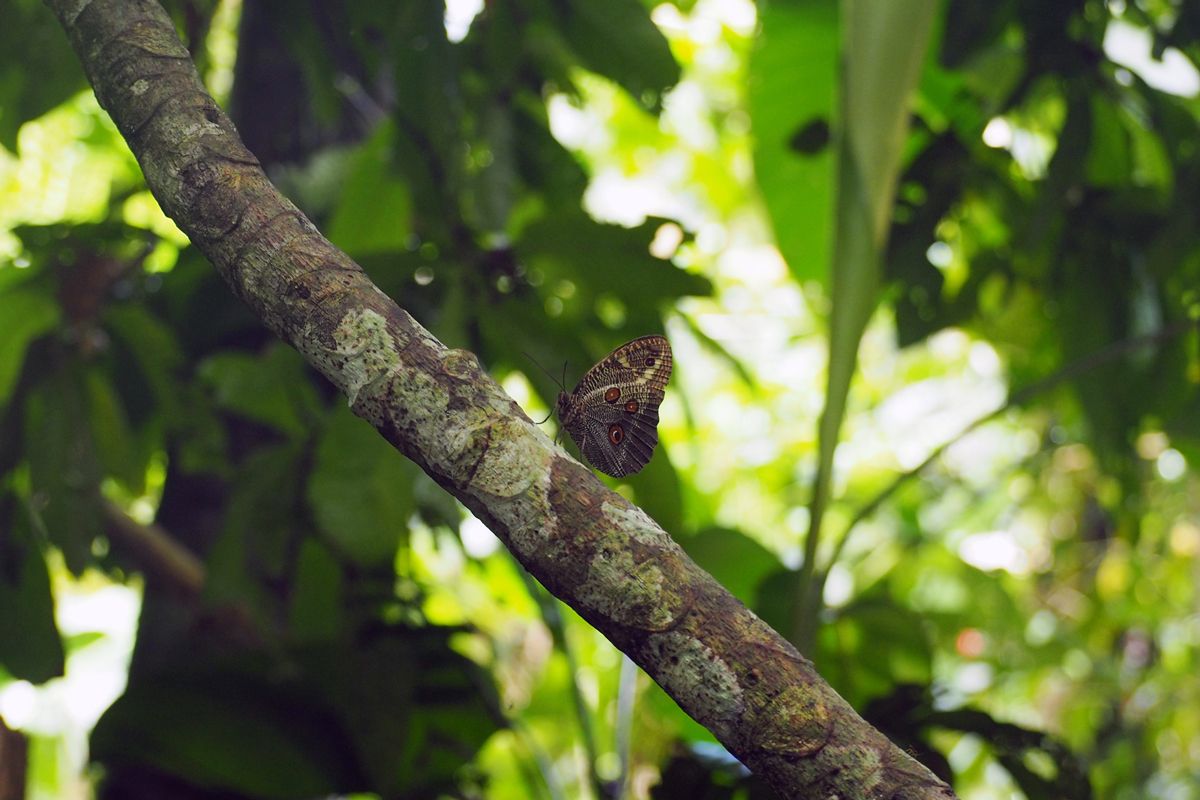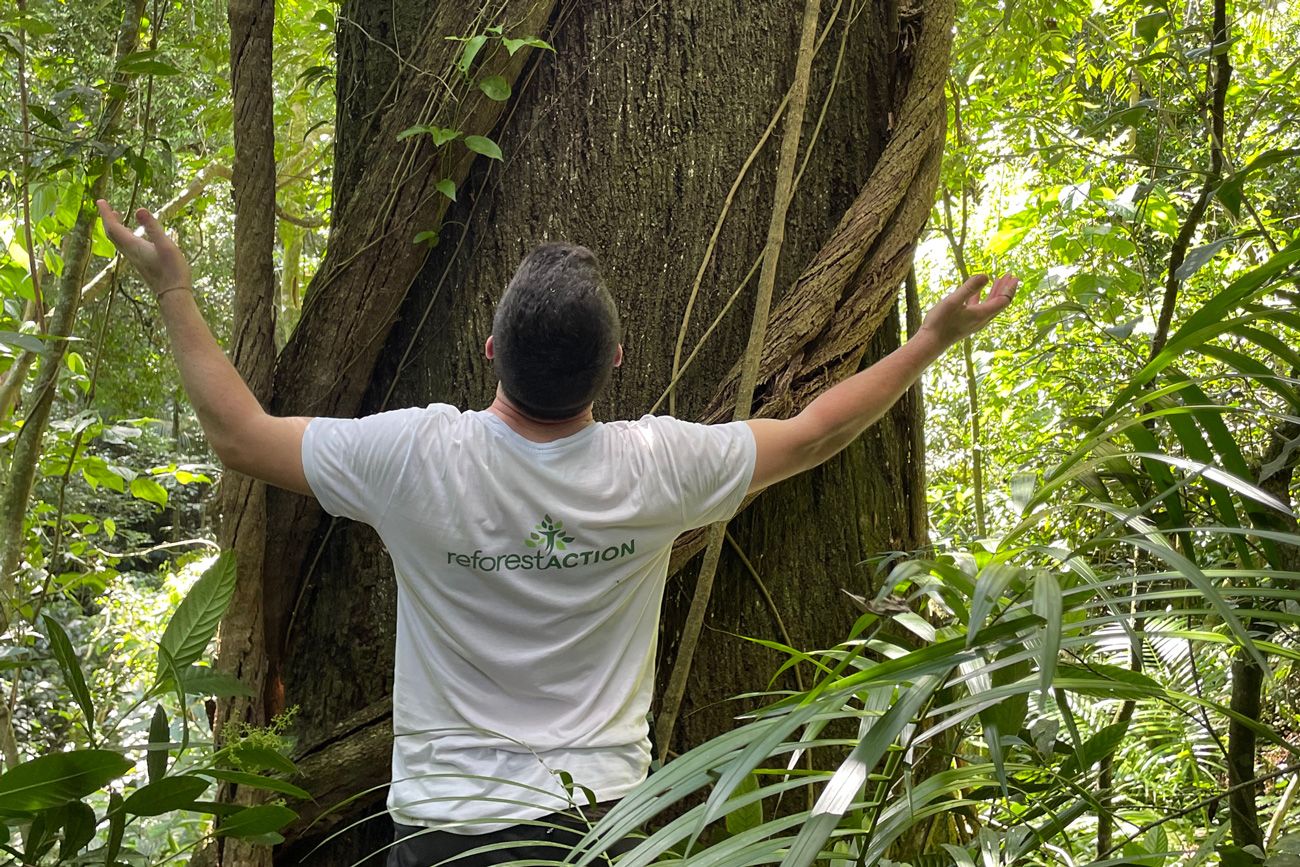While a quarter of all known plant and animal species are now endangered, initiatives continue to develop to help preserve them. Among these, The Global Biodiversity Standard (TGBS) is the only international standard to recognize and encourage the protection, restoration and enhancement of biodiversity. As part of the TGBS technical and scientific network, Reforest'Action contributes its expertise in forest ecosystem restoration and impact measurement to develop remote sensing monitoring tools, particularly for assessing plant biodiversity.

Global biodiversity under threat
With a quarter of known plant and animal species now on the brink of extinction, biodiversity loss is one of the top five global risks to society over the next ten years, according to the World Economic Forum's Global Risk Report 2023. Synonymous with biological diversity, biodiversity encompasses the taxonomic, functional and structural diversity of living species. Through the ecological services it provides, biodiversity is essential to maintaining the integrity and resilience of ecosystems.
Among the main indicators of global biodiversity loss, the decline in the extent of forests underlines their essential role as reservoirs of terrestrial biodiversity when they were the native ecosystem in place. They are home to over 80% of the planet's known terrestrial species. In this respect, a better understanding and preservation of forest biodiversity is essential to help halt the onset of the sixth mass extinction.

The creation of an international standard dedicated to biodiversity
The ambition of the Global Biodiversity Standard
Introduced in 2022, The Global Biodiversity Standard (TGBS) is the only international standard to recognize and encourage the protection, restoration and enhancement of biodiversity. Against a backdrop of increasing numbers of forest creation and restoration projects, this standard aims to develop best practices for creating positive impacts on biodiversity, notably by diversifying tree communities and integrating native species into project design. In the long term, The Global Biodiversity Standard hopes to place biodiversity at the heart of all initiatives that help combat climate change and develop the livelihoods of local communities.
Towards the certification of projects based on the restoration and protection of biodiversity
Based on an international scientific and technical network that includes IUCN & Botanic Garden Conservation International, CIFOR-ICRAF, Royal Botanic Gardens (Kew), Society for Ecological Restoration and Reforest'Action, The Global Biodiversity Standard is currently testing its certification method in real-life conditions, in collaboration with botanical gardens in India, Kenya, Peru, Brazil, Madagascar, Uganda, Malaysia, Jordan and Hong Kong.
Projects submitted for The Global Biodiversity Standard certification will be assessed against criteria derived from the “10 Golden Rules for Reforestation”. This scientific paper, promulgated by Royal Botanic Gardens (Kew) and Botanic Garden Conservation International, provides guidance on how to ensure that reforestation projects promote biodiversity restoration, carbon sequestration and the creation of socio-economic benefits for local communities.
Projects certified by The Global Biodiversity Standard must:
- Select appropriate sites to enhance native biodiversity.
- Enhance protection of existing habitats and biodiversity.
- Protect, restore and manage biodiversity in consultation and partnership with local communities and other stakeholders.
- Aim to maximise biodiversity recovery through ecosystem restoration.
- Avoid and reduce invasive or potentially invasive species.
- Prioritise the use of native, threatened and rare species.
- Promote biodiversity and adaptive capacity.
- Implement robust monitoring, evaluation, and adaptive management of biodiversity.

Reforest'Action's role in The Global Biodiversity Standard
The contribution to remote sensing of forest biodiversity assessment
As part of The Global Biodiversity Standard's technical and scientific network, Reforest'Action brings its expertise in forest ecosystem restoration and impact measurement to the development of remote sensing monitoring tools. Reforest'Action offers The Global Biodiversity Standard a catalog of tools dedicated to remote sensing measurements. These measurements are carried out both upstream of project implementation, and downstream, as part of project monitoring.
While tree species diversity has traditionally been assessed through field studies using samples from selected plots, this process is time-consuming and costly for large-scale analysis. Today, remote sensing provides new ways of monitoring vegetation biodiversity, offering the possibility of generating data sets to track environmental changes over the long term. This remote monitoring makes it possible to detect changes taking place within the forest cover, and thus to refine field sampling, in order to prioritize studies within areas that appear to be experiencing more or less positive evolution than others. As a complement to remote sensing, field monitoring remains essential for its accuracy, its ability to validate remote monitoring data and to calibrate the latter by providing real data to refine analyses.
A tool for mapping tree species diversity in canopies
Among the catalog of tools offered by Reforest'Action to The Global Biodiversity Standard, Reforest'Action's Impact Department is collaborating directly with the standard to develop a tool dedicated to mapping the diversity of tree species within canopies. Based on a concept developed by J.-B. Féret and G. P. Asner (2014) and powered by images from Sentinel-2, a satellite in the European Space Agency's Copernicus program, the methodology and tool, re-appropriated by Reforest'Action, enables analysis of the spatial distribution of spectral species, those vegetation zones that include one or more plant species with a similar spectral signature.
In other words, the tool can be used to assess the diversity of species within a given plot by grouping them into categories known as “spectral species”, based on their physical and biochemical properties (physiological state, water and pigment content, etc.). “Initially, we were looking for a way to measure spatial (within a project area) and temporal (over time) changes in forest stand diversity using remote sensing, in order to better guide sampling during field surveys,” explains Richard Sourbès, Reforest'Action's impact manager. “Based on the method developed by J.-B. Féret and G. P. Asner, we have developed our own tool with innovations that enable us to further refine our remote and field monitoring. While this tool has been used so far mainly in the field of research, Reforest'Action is now applying it for the first time to the operational monitoring of forest restoration projects. This innovative approach is in line with the more general use of remote sensing in the development of our forestry projects - from the design phase through to monitoring.”
A field mission led by Reforest'Action to refine the tool and methodology
During a mission carried out in February 2024 as part of an international workshop organized by The Global Biodiversity Standard, a team from Reforest'Action's Impact Unit travelled to the Brazilian Atlantic Forest to compare estimated remote sensing data with data collected in the field, particularly in terms of tree species diversity in the canopy. “The aim of this mission was to compare the estimate given by satellite imagery with observation in the field, in order to verify their correlation and refine our methodology and tool”, continues Richard Sourbès. “In concrete terms, our experiments in some twenty forest and agroforestry plots demonstrated a strong relationship between the distribution of spectral tree species and that of tree species actually observed in the field.”
This field mission showed encouraging results in terms of the relevance of monitoring spectral species as a proxy for plant diversity in the canopy. The increasing number of projects monitored using this method will enable us to improve its accuracy in the future, by adapting it to the different stages of maturity and types of forest studied by Reforest'Action.
Ultimately, this tool should enable us to better control the evolution of our remote sensing projects, so as to optimize our field monitoring missions. It also aims to provide a better understanding of the factors influencing plant diversity and its evolution over time, so as to be able to propose corrective measures as soon as a negative evolution is detected (for example, the presence of an invasive species). Ultimately, this tool will strengthen the adaptive management of our projects and ensure the long-term survival of forest ecosystems.

To find out more about the spectral species method developed by Reforest'Action, read our dedicated article: “Spectral species: an innovative method for studying plant biodiversity from space”.